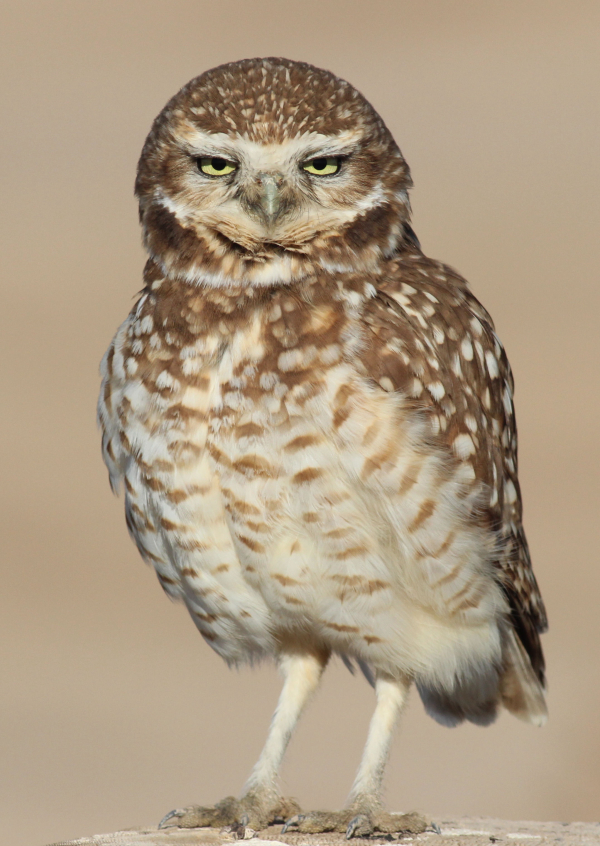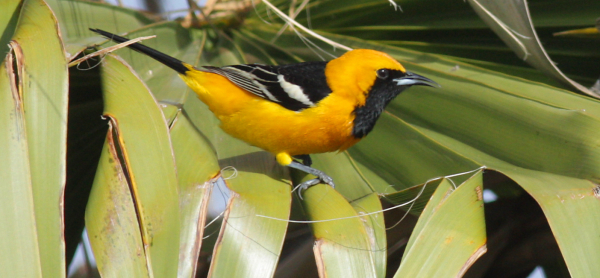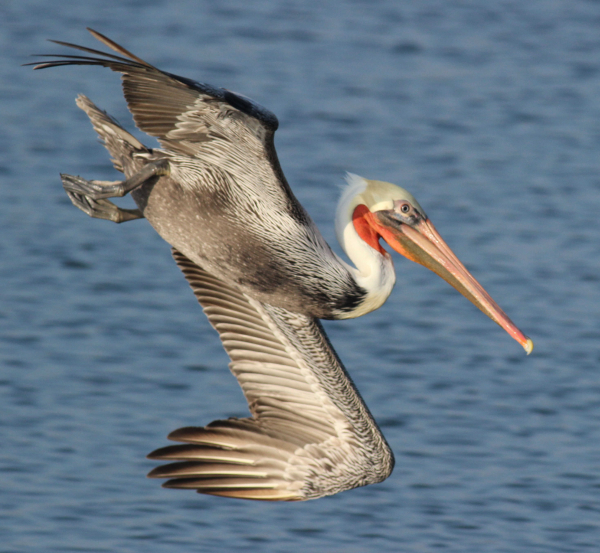Where we live and work often dictates the kinds of birds we have opportunities to photograph. I’ve been lucky to reside in some exciting birding locations, and one of my favorite homes was in San Diego, where the habitats change dramatically as the land spreads east from the Pacific Ocean to the mountains, from the border of Mexico on the south side to the city of Oceanside to the north. As if that isn’t enough, the relatively narrow belt of mountains to the east drops back down to sea level to the Colorado Desert. The diversity of landscapes, seascapes, and habitat types provides a variety of photo opportunities. I was lucky to spend a number of years living beachside and working in the foothills and mountains to the east, and the desert beyond that, and I had my camera with me every day.

The variety of habitat types in the region combined with its Mediterranean climate provides a remarkable diversity of nesting birds, migrants, and wintering species. An index of the seasonal variety is reflected in the one-day San Diego Christmas Bird Count, in which participants found 220 species in the most recent tally, the second most diverse count of any in the United States! But that only includes an area 15-miles in radius north of the border of Mexico. I covered a much more expansive area that included southern San Diego County and a bit of Imperial County that included the south side of the Salton Sea and associated areas to my photography realm.

The striking color of this male Vermillion Flycatcher makes the action in the photo all the more interesting. The shutter speed was fast: 1/2000 second at f9 with an ISO of 400.
|
Along the way, I had my favorite areas, and favorite locations – and favored birds to try to get the best photos of in their element. On the coast, flights of Brown Pelicans were constant companions, along with local specialties like Heermann’s Gulls, Black Skimmers, Elegant Terns, and Brant’s Cormorants, along with scattered but regular Ospreys. At coastal wetlands I enjoyed improving on photos of species I didn’t usually encounter, such as Brant and other wintering waterfowl such as Surf Scoters, Red-breasted Mergansers, Cinnamon Teal, and other ducks, along with a variety of shorebirds ranging from Long-billed Curlews and Whimbrels to Semipalmated Plovers, Willets, Marbled Godwits, and Black-bellied Plovers. Adjacent to the marshes, green spaces attracted Hooded Orioles, Allen’s Hummingbirds, Cassin’s Kingbirds, Black Phoebes, Nuttall’s Woodpeckers, White-tailed Kites, and many more exciting birds.
In the mountains, the payoff included Western Tanagers, California Quail, Mountain Quail, Steller’s Jays, Acorn Woodpeckers, Wrentits, Oak Titmice, and Bushtits. As you continue west the drier mountain slopes are more likely to provide photo ops of Scott’s Orioles, Costa’s Hummingbirds, Cactus Wrens, Black-throated Sparrows, California Thrashers, Phainopeplas, Ladder-backed Woodpeckers, California Scrub Jays, Greater Roadrunners, and more. This area is a delight to explore camera in hand, and you may find an occasional bird beyond its expected range, like Vermillion Flycatchers, Long-eared Owls, and Harris’s Hawks. During winter you may encounter small flocks of Mountain Bluebirds, American Pipits, and Fox Sparrows among the more common wintering species.

Showing a tempered posture of a very animated Burrowing Owl that provided a variety of facial expressions and displays before easing into a reposed, almost sedate stance.
|
There is a rapid transition as you descend from the dry mountain areas to the lowland desert that provides another avifauna to search for that includes Burrowing Owls, Abert’s Towhees, Gambel’s Quail, Common Ground Doves, and others. When you reach the Imperial Valley, where irrigation transforms the desert into one of the most productive farming regions in the Southwest, you begin to encounter wetlands that attract a variety of herons and egrets, along with flocks of White-faced Ibis. During winter, scattered Long-billed Curlews are obvious while wily Mountain Plovers are present but hard to find. Wetlands along the south side of the expansive Salton Sea attract flocks of Ross’s Geese and Snow Geese along with a variety of ducks and scattered shorebirds.
Photo Modes
The birds of the San Diego area are exciting and abundant with a broad variety of sizes, shapes, colors, and behaviors. My most productive photo sessions were during visits to specific birding hotspots, such as the coastal wetlands where waterfowl, shorebirds, and other species congregated to feed and rest. Close to home, a long marsh attracted wintering Brant that captured my attention one winter in particilar, and by spending time focusing on Brant – in flight, feeding, and interacting socially – I also encountered a variety of shorebirds to photograph, along with Black Skimmers. This location worked out well during afternoons, when the sunlight radiated from the southwest, and the blue sky reflected in the water to provide a beautiful background for any birds that swam, walked, or flew in my direction.
A zoom lens would be best for adjusting to the different birds encountered at different distances, but in essence it was rarely the case that I was too close to a bird. Usually, I needed to get a little closer, or wait a few more minutes for the birds to approach my position. Along the coast I used a similar tack by picking a good spot and waiting for pelicans, gulls, terns, sandpipers, and plovers to provide something of an avian parade before me. Aside from obvious flight photos, I emphasized trying to get photos of Brown Pelicans diving for fish, which always provided fast-paced action – when I was able to be in position to document their intense fishing activity.

It seemed unlikely at the time, but I did take my best photos of 3 species from my home. I didn’t have any feeders, but I did manage to take some nice portraits of a Black Phoebe and colorful male House Finch perched on tree branches outside my second floor balcony. Even more unlikely, and downright exciting was the chance to photograph Hooded Orioles outside my beachfront view. From my office, I spied a magnificent adult male that was followed by a first-year male, both interacting with a female in 2 palm trees directly across the boardwalk. With morning sunlight coming from behind me, the situation was perfect, so I grabbed my camera, opened the window, and began focusing on the oriole action – what a thrill.

Photographing the dive of a Brown Pelican in pursuit of aquatic prey is fast-paced, and this initial photo of the process documented the moment when the callosal bird transitioned from a gliding flight into a dramatic head-first dive, taken at 1/1250 second.
|
One of my best series of photographs was provided by a very animated and trusting Burrowing Owl that I found near the south side of the Salton Sea. In beautiful afternoon desert light with a hint of spring in the air, an active Burrowing Owl created a number of display postures that rivaled a theatrical performance, bobbing low, then stretching into clown-like postures, while also retreating into moments of dozing with its eyes closed, then preening and ruffling its feathers in maintenance behaviors. We photographers are always on the lookout for birds like this, that I refer to as “ambassadors of their species,” providing the opportunity to spend time with them in close quarters to take portrait and action photos that can be shared with a broad audience of viewers who might take a more enlightened view of a species, or of the attraction of birds overall.
Other times I was able to take advantage of a bird I crossed paths with while working, either when hiking or driving down a remote track. Suddenly, there would be a Black-throated Sparrow, or a California Thrasher, and with my camera always within reach, if not in hand, I did what I could to make the most of any opportunity, whether fleeting or a bit more prolonged. One day while hiking I spied a flash of red before me and realized it was a male Vermillion Flycatcher, a very rare sighting in the region. I stopped in my tracks and noticed it was “hawking” insects from a couple different low perches.

This photo shows a lot of power; action and perceived action, the tension of the catch, and the intensity of the hunter. Ospreys are the most common birds of prey along coastal areas, consisting of adult nesting birds, immature non-breeders, and wintering individuals in season.
|
Seeing the potential, I took a few steps to be sure the sunlight was coloring the scene from behind me, and double-checked to see that my shadow was pointing directly at the bright red flycatcher. Then, when the little red bird returned to a second preferred perch, I carefully eased forward and hoped the mighty hunter would return to the perch in front of me. I didn’t need to wait long before the Vermillion obliged and I took a couple initial photos of it perched. Then seeing it wasn’t concerned with me, I began concentrating on photographing as it returned to the perch, just as it landed with its wings outstretched. I focused directly on the twig, and watched out of the corner of my eye until I could see the flycatcher returning; then waited for it to enter my camera frame to take a photo or 2. I appreciated the opportunity to take a few photos in this manner before the spectacular little bird moved 100 yards to hunt that area.
All in all, living on the beach in San Diego was tough to beat, and working in the surrounding region was truly rewarding on professional and personal levels. The photographs I managed to take there are among my favorites, and I’m glad to share a few of them here with you. San Diego County is a great birding destination, but wherever you live, take advantage of the different habitats, landscapes, and seasons to search for bird photo opportunities. Be persistent, watch the weather for sunny days – or sunny hours, select optimum times of the day to take photo sessions afield, and enjoy each photo opportunity that area birds and migrants have to offer. Good Luck!
Article and photographs by Paul Konrad
Share your bird photos and birding experiences at editorstbw2@gmail.com